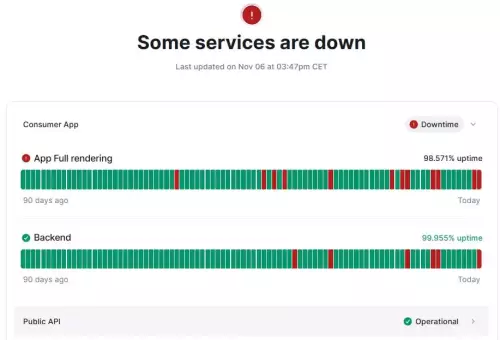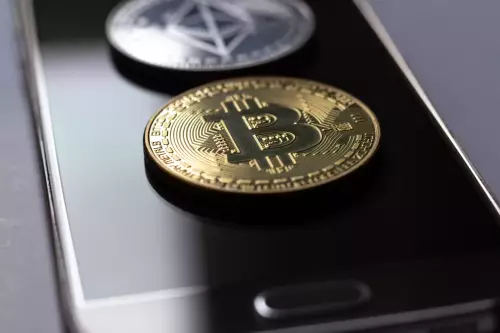 |
|
 |
|
 |
|
 |
|
 |
|
 |
|
 |
|
 |
|
 |
|
 |
|
 |
|
 |
|
 |
|
 |
|
 |
|

Bitcoin Core is shaking things up again, sparking intense debate by ditching its longstanding 80-byte OP_RETURN limit.
The upcoming update will effectively kill the old ceiling, a move framed by the Bitcoin Core developers as aligning the relay policy closer to real-world mining practices, but not everyone is thrilled.
The change was announced by developer Greg Sanders on GitHub, stating that it will allow transactions with OP_RETURN outputs exceeding 80 bytes as well as multiple such outputs per transaction. In plain terms: more data, fewer artificial restrictions, and a relay policy that finally mirrors on-chain reality.
Before we get into the details, let’s have a quick rundown on what this all means.
OP_RETURN or OP_CAT?
OP_RETURN and OP_CAT are two Bitcoin script commands—one embedded, one exiled—that define the boundary between Bitcoin’s past limitations and its potential future.
Originally introduced as a way to embed small, unspendable pieces of data into the blockchain, OP_RETURN allows up to 80 bytes of user-defined data per transaction. The catch is that it burns the Bitcoin sent with it. That output is forever unspendable, a calculated tradeoff for preventing UTXO bloat.
Its use cases are narrow but persistent. It’s useful for things like proving a document existed at a certain time, creating basic tokens, or adding notes. And because it’s clearly unspendable, it doesn’t make the system slower or more complicated. But Bitcoin only lets one OP_RETURN note per transaction under normal conditions—so you can’t abuse it to spam the network.
OP_CAT, on the other hand, is the opcode that never really was. OP_CAT is a Bitcoin opcode that was disabled in 2010 because it could potentially crash nodes. All it does is combine two pieces of data from the stack into one. Sounds basic, right? But it’s actually very powerful.
If reactivated, OP_CAT would allow Bitcoin to support much more advanced smart contracts, opening the door to an entirely new class of smart contracts on the network —more composable, flexible, and modular. Think covenants, advanced multi-sigs, zero-knowledge proofs (ZKPs), or even decentralised bridges, etc.
The move sparked criticism from those who prefer Bitcoin's minimalist design and pointed out the lack of consensus on the proposal.
Luke Dashjr, leading the alternative Bitcoin Knots client with around 5% network presence, slammed the move as “utter insanity”, asserting it betrays Bitcoin’s minimalist principles.
Samson Mow called it an “undesirable change” on X, but stated there might be pragmatic reasons for it, adding that users can simply stick to version 29.0 or switch to alternative clients if they reject the new policy.
“There is no consensus at the moment on this OP_RETURN issue,” said Marty Bent, managing partner at Ten31 Fund.
The change will also remove the 80-byte limit on OP_RETURN outputs, allowing for larger payloads of up to 520 bytes.
The proposal to modify the OP_RETURN relay policy and introduce support for multiple OP_RETURN outputs was originally raised in December 2023 and has since garnered attention and feedback from various community members.
Those in favor of the change highlight the technical aspects and the alignment with the behavior of the majority of miners. They also emphasize the importance of adapting to new use cases and keeping pace with technological advancements.
However, critics express concern over deviating from the original Bitcoin design philosophy and the potential impact on smaller clients and full nodes. They argue that the changeover should have involved a broader consensus and a more structured proposal process.
As the Bitcoin ecosystem continues to evolve, the discussion around OP_RETURN limits and relay policies is likely to persist, especially with the emergence of new use cases and the need to balance innovation with the core principles of the Bitcoin network.
免责声明:info@kdj.com
所提供的信息并非交易建议。根据本文提供的信息进行的任何投资,kdj.com不承担任何责任。加密货币具有高波动性,强烈建议您深入研究后,谨慎投资!
如您认为本网站上使用的内容侵犯了您的版权,请立即联系我们(info@kdj.com),我们将及时删除。
-

-

-

- Morpho Network DeFi可靠性测试:服务中断动摇用户信心
- 2025-11-07 03:59:51
- Morpho 网络最近的一次服务中断凸显了维持 DeFi 可靠性的挑战,影响了用户体验和信任。
-

- 比特币、以太坊和政府关门:应对不确定性
- 2025-11-07 03:55:22
- 加密货币市场面临着比特币的看跌信号和政府可能关闭的经济不确定性带来的阻力。以太坊质押提供了一个潜在的安全港。
-

- 山寨币、比特币和以太坊:应对 2025 年的加密货币寒冬
- 2025-11-07 03:34:00
- 分析 2025 年 11 月的山寨币市场低迷,重点关注比特币、以太坊以及向基本面健全的加密项目的转变。
-

- 稳定币与美元挂钩失去价值:加密世界的疯狂之旅
- 2025-11-07 03:29:10
- 稳定币应该是稳定的,对吗?让我们深入了解最近与美元挂钩的动摇事件,以及这对投资者意味着什么。
-

- 加密钱包:从比特币基础知识到人工智能驱动的未来迭代
- 2025-11-07 03:27:32
- 探索加密钱包的演变,从简单的存储到 DeFi 工具,并通过人工智能和传统金融集成窥探未来的迭代。
-

-































































